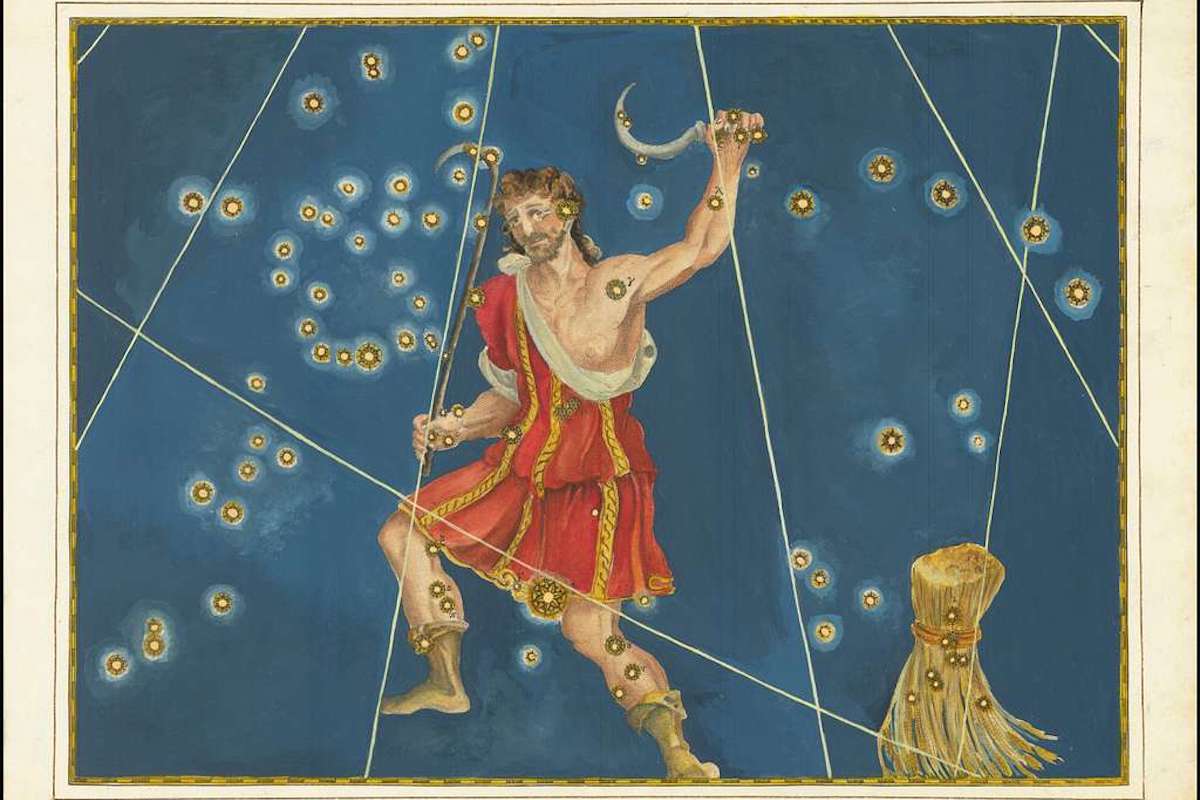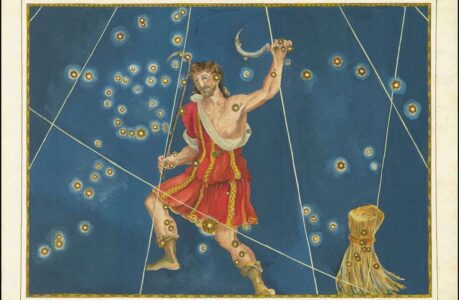The constellation of Bootes is one of the most recognizable and prominent figures in the northern hemisphere’s night sky. Located between the constellations of Ursa Major and Virgo, Bootes is visible from Ireland during certain times of the year, offering a unique opportunity to explore this celestial figure and its mythology.
In this article, we’ll take a closer look at the constellation of Bootes, its history and mythology, and offer tips on how to view it from Ireland.
What is the Constellation of Bootes?
The constellation of Bootes, also known as the Herdsman, is named after a figure from Greek mythology. Bootes was said to be a shepherd who invented the plough and was later placed among the stars by the goddess Hera in honour of his achievements.
In the night sky, Bootes appears as a kite-shaped figure with its brightest star, Arcturus, located at the top. Arcturus is one of the brightest stars in the sky and can be easily identified by following the arc of the Big Dipper’s handle.
The mythology behind Bootes has been passed down for centuries and can be found in many ancient cultures, including Greek, Roman, and Egyptian mythology.
Viewing Bootes from Ireland
The best time to view Bootes from Ireland is during the spring and summer months, particularly in May and June when it is highest in the sky. During this time, the constellation is visible in the northeastern sky and is easily identified by its kite-shaped pattern.
To view Bootes, find the Big Dipper and follow the arc of its handle until you reach Arcturus, the brightest star in the constellation. From there, look for the kite-shaped pattern of stars that make up Bootes.
If you’re having trouble locating Bootes, try using a star chart or mobile app that can help you identify the constellation’s location and position in the sky.
Best Locations for Viewing Bootes
To view Bootes from Ireland, you’ll want to find a location with minimal light pollution, such as a dark sky park or remote countryside area. Popular locations for stargazing in Ireland include the Kerry International Dark Sky Reserve, the Ballycroy National Park in County Mayo, and the West Cork Dark Sky Reserve.
When stargazing, it’s important to allow your eyes to adjust to the darkness, which can take up to 20 minutes. Be sure to dress warmly and bring a blanket or chair to sit on while observing the night sky.
The constellation of Bootes is a fascinating celestial figure with a rich history and mythology. Viewing Bootes from Ireland is a unique opportunity to explore this constellation and learn more about the ancient stories behind it.
By following the tips outlined in this article and finding a suitable location with minimal light pollution, you’ll be able to view Bootes and other celestial figures in the night sky and discover the wonders of our universe.
How can I see the constellation of Bootes from Ireland?
To see the constellation of Bootes from Ireland, you’ll need to wait for the right time of year and find a location with minimal light pollution. Here are the steps you can follow:
- Check the time of year: Bootes are visible in the northeastern sky during the spring and summer months, particularly in May and June when it is highest in the sky.
- Find a location with minimal light pollution: To see the stars more clearly, you’ll need to find a location with minimal light pollution, such as a dark sky park or remote countryside area. Popular locations for stargazing in Ireland include the Kerry International Dark Sky Reserve, the Ballycroy National Park in County Mayo, and the West Cork Dark Sky Reserve.
- Allow your eyes to adjust to the darkness: When you arrive at your chosen location, allow your eyes to adjust to the darkness for at least 20 minutes. Avoid looking at your phone or any bright lights during this time.
- Look for the Big Dipper: Once your eyes have adjusted, look for the Big Dipper, which is a well-known group of stars that is easy to spot. Follow the arc of its handle until you reach Arcturus, the brightest star in the constellation of Bootes.
- Look for the kite-shaped pattern: From Arcturus, look for the kite-shaped pattern of stars that make up Bootes. It may be easier to use a star chart or mobile app to help you identify the constellation’s location and position in the sky.
Remember to dress warmly and bring a blanket or chair to sit on while observing the night sky. With a little patience and preparation, you should be able to see the constellation of Bootes from Ireland and discover the wonders of our universe.
The mythology of the constellation of Bootes
The constellation of Bootes, also known as the Herdsman, has a rich history and mythology that dates back to ancient times. In Greek mythology, Bootes was said to be a shepherd named Icarus, who was renowned for his kindness and hospitality.
One day, he was visited by the god Dionysus, who taught him the art of winemaking. Icarius was so pleased with this gift that he decided to share it with the people of his village. However, they drank too much and became drunk, causing them to believe that Icarius had poisoned them. In their drunken state, they killed Icarius.
Dionysus, angered by the villagers’ actions, placed Icarius among the stars as the constellation of Bootes. Bootes was given the task of guarding the vineyards of the gods and was said to be responsible for the ripening of the grapes.
In another version of the myth, Bootes was said to be a son of Demeter, the goddess of agriculture, and was tasked with ploughing the fields. He invented the plough and was later placed among the stars by the goddess Hera in honour of his achievements.
In Roman mythology, Bootes was known as Arcturus, which means “guardian of the bear”. The bear referred to in this mythology was the Great Bear constellation, which is also known as Ursa Major. Arcturus was said to be a guardian of the Great Bear and was responsible for ensuring that it never came too close to the Earth.
The mythology of Bootes has been passed down for centuries and can be found in many ancient cultures, including Greek, Roman, and Egyptian mythology. Today, the constellation is still a prominent figure in the night sky, and its mythology continues to inspire astronomers and stargazers alike.
The Stars in the constellation of Bootes
The constellation of Bootes is home to many interesting stars, including its brightest star, Arcturus. Here are some of the most notable stars in Bootes:
- Arcturus (Alpha Bootis): Arcturus is the brightest star in the constellation of Bootes and the fourth-brightest star in the night sky. It is a red giant star that is 25 times larger than the Sun and located approximately 36.7 light-years away from Earth.
- Nekkar (Beta Bootis): Nekkar is the second-brightest star in Bootes and a yellow giant star located approximately 219 light-years away from Earth.
- Mufrid (Eta Bootis): Mufrid is a blue-white star located approximately 118 light-years away from Earth.
- Seginus (Gamma Bootis): Seginus is a white main-sequence star located approximately 85 light-years away from Earth.
- Izar (Epsilon Bootis): Izar is a binary star system located approximately 203 light-years away from Earth. It is composed of a blue-white primary star and a fainter companion star.
- Merga (31 Bootis): Merga is a triple star system located approximately 104 light-years away from Earth. It consists of two yellow stars and a red dwarf star.
Bootes is also home to several deep-sky objects, including the Bootes Void, which is a large region of space that appears to be almost empty of galaxies. The constellation is also home to several galaxies, including the brightest member of the Bootes Galaxy Cluster, NGC 5248.
Overall, the stars and deep-sky objects in the constellation of Bootes make it an interesting and rewarding target for stargazers and astronomers.
Deep sky objects visible in the Constellation of Bootes
The constellation of Bootes is home to several interesting deep-sky objects, including galaxies and star clusters. Here are some of the most notable deep-sky objects visible in Bootes:
NGC 5248 is a spiral galaxy located approximately 24 million light-years away from Earth. It is the brightest member of the Bootes Galaxy Cluster and is visible through small telescopes.
Arp 148 is a pair of interacting galaxies located approximately 500 million light-years away from Earth. It is also known as “Mayall’s object” and is a popular target for astrophotography.
NGC 5676 is a barred spiral galaxy located approximately 270 million light-years away from Earth. It is notable for its prominent dust lanes and star-forming regions.
Abell 1656, also known as the Coma Cluster, is a massive cluster of galaxies located approximately 320 million light-years away from Earth. It is one of the most densely populated clusters known and contains over 1,000 galaxies.
NGC 5466 is a globular cluster located approximately 52,000 light-years away from Earth. It is one of the most distant globular clusters visible to the naked eye and is notable for its high concentration of stars.
M3 (NGC 5272) is a globular cluster located approximately 34,000 light-years away from Earth. It is one of the largest and brightest globular clusters in the sky and is visible through small telescopes.

